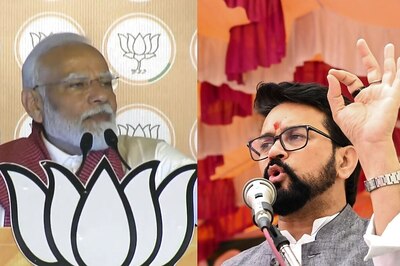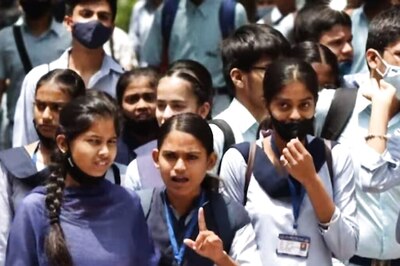
views
When Anna Hazare began his protest against the government’s refusal to accept the Jan Lokpal Bill, phones across the country were inundated with SMSes gathering support for the next march or demonstration.
SMS GupShup, a group messaging service, was responsible for sending several of these messages. GupShup groups like Anna, Jaibhim, newsb and JagoHaryana each with more than 50,000 members along with a bunch of smaller groups, sent out over 1 crore messages in a week.
The company's success in the Hazare movement justifies its attempts at positioning itself as India’s largest social network.
It's no surprise then that GupShup founder Beerud Sheth thinks nothing of Facebook. "The Internet doesn’t have any meaningful impact (in India). People say, 'We have a community on Facebook that has 5,000 users.’ I am like, ‘What a joke!'"
GupShup has more than 45 million registered users. ("More than Facebook!" claims Sheth. Facebook had 25 million members in India as on April 31, 2011.)
Around 500 big-ticket brands such as Pepsi, Ford Motors, Puma, Dell and Lifestyle use the service as part of their marketing and advertising mix.
A postgraduate from Massachusetts Institute of Technology, Sheth, in 1999, founded Elance, one of the first companies on the Internet that allowed businesses to contact and hire freelancers. In 2007, he started another company Webaroo, whose core product is SMS GupShup, launched in the same year.
Here's how GupShup works: After subscribing to the service (either registering on smsgupshup.com or by sending an SMS), members join groups and communities of their choice and receive text messages (on, say, Art of Living, or Mumbai Traffic Police updates). Some messages have a short advertisement at the end. For example, the Mumbai Traffic Police’s updates are paid for by companies like Michelin Tyres or auto insurance companies that place their ads at the end of the message.
However, GupShup's core clientele are the more than 25,000 small and medium enterprises (SMEs) who use the service to sell their products and services. And most SMEs, like GupShup’s users, are not from the metros.
Uday Patil and Satish D. are two such GupShup advertisers. Patil runs Anand Online, an e-commerce store, out of his office on Mira Road, a far-flung suburb of Mumbai. His primary products are cameras and car accessories and he rakes in an annual revenue of Rs. 5 crore. "I can’t afford ads in newspapers or on TV. This is the best way for me to reach a large number of people," he says. In the one year that he has been using the service, Patil has sent out between 2 crore and 3 crore SMSes. At 1.5 paise per SMS, he has spent Rs. 4.5 lakh on GupShup, which brought him around 8,000 customers, and sales of Rs. 40 lakh (an average sale price of Rs. 500 per customer).
Satish D uses GupShup to sell life insurance policies in Nashik. "I have a proper target audience with GupShup and they account for a large portion of my sales," he says. He has sold more than 50 policies through GupShup, although he will not say what percent of his sales this accounts for.
Nimit Grover, business development manager, Letsbuy.com, echoes Patil and Satish’s views. "Though Letsbuy.com is an online company, I use GupShup. Very few people are logged on to the Internet at any given time. GupShup gives me a much better reach," he says.
Overtaking the Giants
Sheth is not looking to overtake the dozen other similar services in India in the long run. He is looking to overtake the giants, Facebook and LinkedIn.
The plan has two parts, He wants GupShup to become the Facebook of the mobile messaging space; and he wants GupShup to become the largest social network in the world. This means enabling group messaging for every mobile phone subscriber — around five billion of them — worldwide.
"It’s an audacious goal, but we can do it. SMS works on every mobile handset," Sheth says.
Facebook, with more than 750 million active users worldwide, is on track to generate $4 billion in revenue by end of 2011. Twitter has 75 million global users and analysts project it will end 2011 with $150 million in revenue. GupShup is set to exit 2011 with a little over $20 million (Rs. 100 crore).
Despite GupShup being puny compared with the global biggies, Sheth doesn’t think his confidence is misplaced. The biggest difference between GupShup and its competitors is how big they perceive the market to be.
"The current size of the mobile phone advertising market should be around Rs. 100 crore," says Abhijit Saxena, CEO, NetCore Solutions, GupShup’s rival. He says the market is expected to grow to between Rs. 500 crore and Rs. 1,000 crore in the next five years. Rs. 100 crore, Saxena’s estimate of the current market size, is what GupShup is hoping to rake in by this year end. Sheth claims that GupShup will double its number of users and its revenue by next year.
In 2009, they had 20 million users, and had to slow down the increase in the number of users in the past two years because they were growing too fast. Every month, the service is adding around 3 million users and sends 3 billion SMSes. That’s almost 10 per cent of India’s total SMS traffic.
Having enough money to burn before the profits start rolling in is another major factor in this business, and GupShup seems to have that covered for now: It has had four rounds of funding since its inception in 2007. The total amount invested in the service is around $37 million (Rs 150 crore). The last round of funding took place in January 2010, when it was injected with $12 million from Globespan Capital Partners, along with additional financing from existing investors Charles River Ventures and Helion Venture Partners. Sheth continues to look for additional investors.



















Comments
0 comment